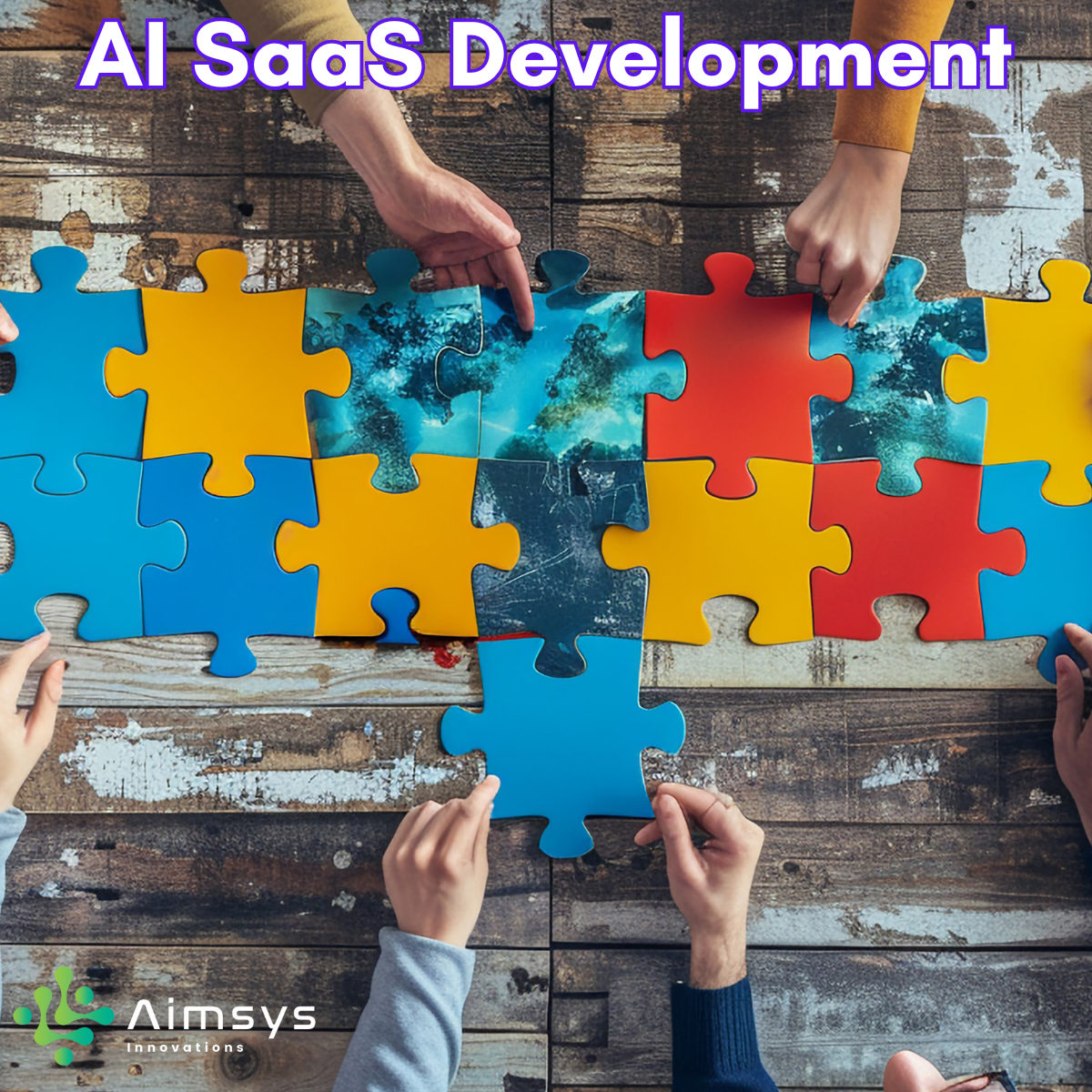Posted At: Aug 19, 2025 - 388 Views

AI-Based SaaS Development: Transforming Cloud Software into Intelligent Solutions
In recent years, Artificial Intelligence (AI) and Software-as-a-Service (SaaS) have been two of the most influential forces in the tech industry. When combined, they create AI-Based SaaS — intelligent, scalable, and cloud-powered software that learns, adapts, and delivers personalized value to users.
From automated content creation to predictive analytics and intelligent process automation, AI-Based SaaS solutions are reshaping industries by offering smarter, faster, and more cost-effective services.
In this article, we’ll explore what AI-Based SaaS means, how to develop one, the tech stack, challenges, and emerging trends.
1. What is AI-Based SaaS?
AI-Based SaaS refers to cloud-hosted software applications that integrate artificial intelligence capabilities such as machine learning (ML), natural language processing (NLP), computer vision, and predictive analytics.
Unlike traditional SaaS, which relies on predefined rules and workflows, AI-based platforms continuously learn from data to improve outcomes over time.
Examples of AI-Based SaaS in Action:
- Grammarly – Real-time grammar correction and style suggestions using NLP.
- Jasper AI – AI-driven content generation for marketing.
- HubSpot AI – Smart lead scoring and predictive customer insights.
- DataRobot – Automated machine learning for enterprise analytics.
2. Why Businesses are Adopting AI-Based SaaS
The combination of SaaS and AI creates a powerful business model that offers:
- Scalability: Cloud-native AI models can handle thousands of users simultaneously.
- Personalization: AI tailors experiences for each user.
- Automation: Reduces manual work with intelligent workflows.
- Continuous Improvement: Models evolve as new data is collected.
- Cost Efficiency: No heavy infrastructure investment for customers.
3. Core Features of AI-Based SaaS Applications
To deliver real value, AI-powered SaaS platforms often include:
- Automated Decision-Making – Using AI to make recommendations or take actions.
- Predictive Analytics – Forecasting outcomes using historical and real-time data.
- Natural Language Interaction – Chatbots, voice assistants, and sentiment analysis.
- Computer Vision – Image recognition, object detection, and facial analysis.
- Integration APIs – Connecting with CRM, ERP, and third-party tools.
- Self-Learning Models – AI that improves accuracy with continued use.
4. AI-Based SaaS Development Process
Step 1: Problem Identification & Market Research
- Identify high-impact problems AI can solve better than existing solutions.
- Research competitors and identify unique differentiators.
Step 2: Data Acquisition & Preparation
- Collect relevant datasets from public sources, APIs, or proprietary systems.
- Clean and label data to ensure quality for AI training.
Step 3: AI Model Development
- Select appropriate ML/DL techniques (supervised, unsupervised, reinforcement learning).
- Use frameworks like TensorFlow, PyTorch, or Hugging Face for model creation.
- Validate performance using metrics like accuracy, F1-score, or ROC-AUC.
Step 4: SaaS Architecture Design
- Choose multi-tenant or single-tenant architecture based on scale.
- Implement microservices for modular, scalable functionality.
- Use REST or GraphQL APIs for model integration.
Step 5: Frontend & UX Design
- Build responsive dashboards and visualizations.
- Focus on intuitive, non-technical interfaces for broader adoption.
Step 6: Cloud Deployment
- Containerize models with Docker and orchestrate using Kubernetes.
- Deploy on AWS SageMaker, Google Vertex AI, or Azure Machine Learning.
Step 7: Monitoring, Optimization & Continuous Learning
- Track model drift and retrain models as new data arrives.
- Implement feedback loops for human-in-the-loop validation.
5. Technology Stack for AI-Based SaaS Development
AI & Machine Learning:
- TensorFlow, PyTorch, Scikit-learn, Hugging Face
Backend:
- Python (FastAPI, Django), Node.js, Go, Java
Frontend:
- React.js, Vue.js, Angular
Data Processing:
- Apache Spark, Kafka, Airflow
Databases:
- PostgreSQL, MongoDB, Redis, Elasticsearch
Cloud & DevOps:
- AWS, Google Cloud, Azure
- Docker, Kubernetes, Terraform
6. Challenges in AI-Based SaaS Development
- Data Privacy & Compliance: AI models often require sensitive data — compliance with GDPR, HIPAA, or CCPA is crucial.
- Bias & Fairness: AI can reflect and amplify data biases if not managed properly.
- High Compute Costs: Training large AI models requires significant computing power.
- User Trust & Transparency: Users need explainable AI (XAI) to understand decisions.
- Model Maintenance: AI requires continuous retraining to remain relevant.
7. Future Trends in AI-Based SaaS
- Generative AI Integration – AI creating content, designs, and code.
- Low-Code/No-Code AI SaaS – Allowing non-technical users to build AI workflows.
- Edge AI SaaS – Running AI inference locally for faster response and privacy.
- AI Agents – Autonomous SaaS components that execute tasks independently.
- Hyper-Personalization – Real-time AI-driven customization for every user.
8. Conclusion
AI-Based SaaS is not just an upgrade to traditional SaaS — it’s a complete reimagining of what cloud software can do. By combining the scalability of the SaaS model with the intelligence of AI, companies can deliver solutions that learn, adapt, and improve continuously.
For startups, it’s an opportunity to disrupt markets with smarter products. For enterprises, it’s a path to efficiency, automation, and better customer experiences.
The future of SaaS is AI-powered — and the time to build is now.
